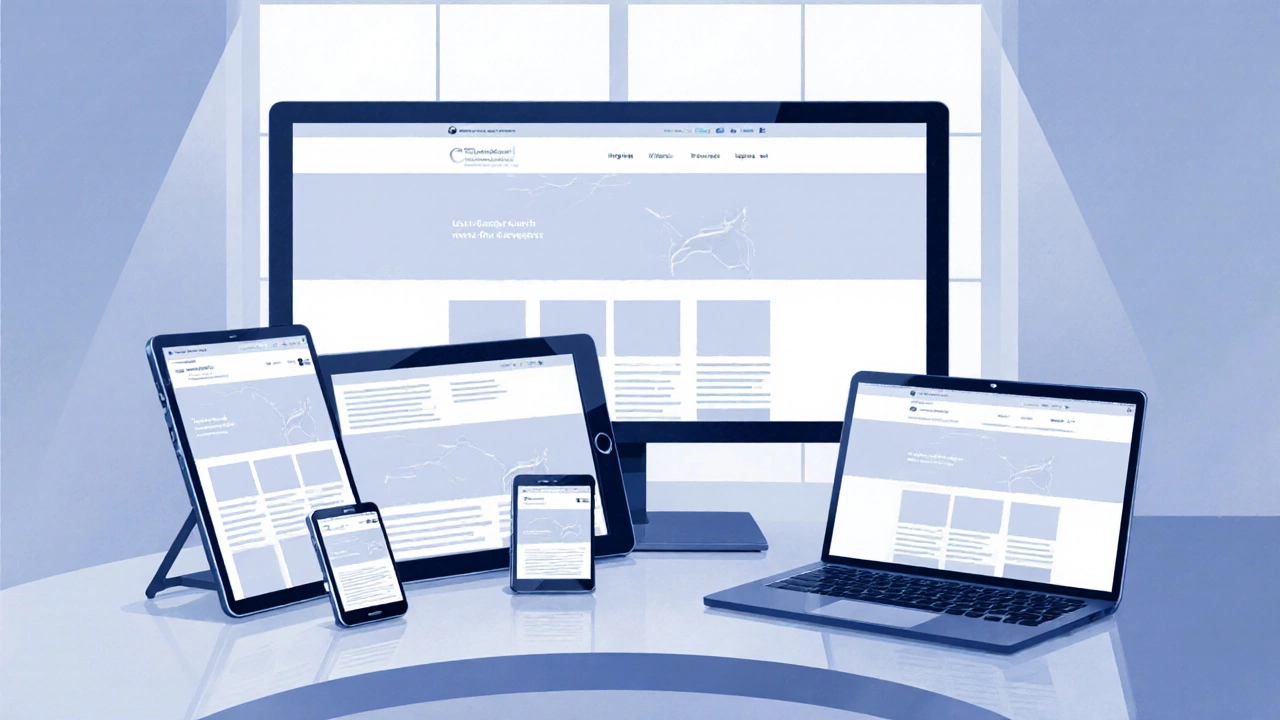Responsive Web Design
When working with responsive web design, a design approach that adapts layout, images, and functionality to fit the screen size and orientation of the user’s device. Also known as RWD, it ensures a seamless experience across smartphones, tablets, and desktops. In practice, responsive web design is not just a buzzword; it’s a set of techniques that let a single codebase serve many devices, saving time and money.
Key Building Blocks
The heart of responsive design lies in three core concepts. First, breakpoints, predefined screen widths where the layout shifts to better suit the available space guide the grid’s reflow. Second, media queries, CSS rules that apply styles conditionally based on device characteristics like width, height, or pixel density enable those shifts. Third, a CSS framework, a pre‑built collection of grid systems, components, and utilities that speed up development such as Bootstrap or Tailwind can automate much of the heavy lifting. Together these elements create a fluid grid that stretches, shrinks, or re‑orders content without breaking the design.
Semantic triples emerge naturally: responsive web design encompasses breakpoints; responsive web design requires media queries; and breakpoints influence the behavior of CSS frameworks. When you set a breakpoint at 768 px, the framework’s column definitions might collapse from a four‑column layout to a single‑column stack, while a media query toggles font sizes for readability. Understanding this chain lets you predict how changes ripple through the site, making debugging far simpler.
Beyond the basics, modern tools add automation. Automatic responsiveness plugins can scan your stylesheet and suggest optimal breakpoints, while design systems embed responsive tokens that keep spacing and typography consistent across breakpoints. Mobile‑first strategies flip the usual flow: you start with styles for the smallest screens, then layer up with media queries for larger devices. This approach reduces CSS bloat and improves performance, which directly impacts SEO and user satisfaction.
In practice, you’ll often juggle multiple entities. A fluid grid decides how many columns appear at each breakpoint, while flexible images use the srcset attribute to serve the right resolution. Accessibility considerations—like ensuring touch targets are large enough—tie back to the same breakpoints, because a button that works on desktop may be too small on a phone. By treating these pieces as interconnected, you build a site that feels native on any device.
The articles below dive deeper into each of these topics. You’ll find a breakdown of the best breakpoint sizes for 2025, a comparison of responsive vs adaptive design, guides on automating mobile optimization, and real‑world examples of using Bootstrap’s grid effectively. Whether you’re a seasoned developer looking for the latest best practices or a newcomer wanting a clear roadmap, this collection gives you actionable insights to make your sites truly responsive.
Ready to see the techniques in action? Scroll down to explore detailed guides, tool reviews, and practical tips that will help you master responsive web design and keep your projects future‑proof.
Responsive Web Design Theory Explained
- Jaxon Millwater
- Responsive Web Design
- 0 comment
Learn the core theory behind responsive web design, including fluid grids, flexible images, media queries, mobile‑first strategy, and practical best‑practice tips.
VIEW MOREFirst Responsive Website: How 'Responsive Web Design' Started the Revolution
- Jaxon Millwater
- Responsive Web Design
- 0 comment
Curious about which site truly launched the responsive web design era? This article digs into the surprisingly recent history of the first responsive website and how it changed the way we build for all screens. You'll learn who started it, the tech behind it, and what lessons it holds for today's developers. We'll even cover some mistakes you can sidestep. Whether you're a coding newbie or a digital veteran, there's some practical web wisdom here.
VIEW MOREResponsive Web Design: What Really Makes Your Website Responsive?
- Jaxon Millwater
- Responsive Web Design
- 0 comment
Ever wonder why some websites just work on any screen, while others are a mess on your phone? This article breaks down the nuts and bolts of what makes a website responsive. You'll see which tools, tricks, and mindsets make the real difference. No confusing tech talk—just practical info, tips, and real-world advice. Whether you’re starting out or fixing old sites, you’ll find stuff you can actually use.
VIEW MOREHow to Convert Your Website to Responsive Design Easily
- Jaxon Millwater
- Responsive Web Design
- 0 comment
Thinking about making your website look great on any device? Converting your site to a responsive design isn't just important; it's a game-changer. This article breaks down practical steps and shares tips to help you transition smoothly, ensuring your visitors can enjoy the best experience possible, whether they're on a smartphone, tablet, or desktop. Find out what tools and techniques can make this process easier and more efficient.
VIEW MOREWhy Responsive Web Design Rocks
- Jaxon Millwater
- Responsive Web Design
- 0 comment
Responsive web design is a game-changer for making websites look stunning and work smoothly across all devices. It's crucial for reaching wider audiences and enhancing user experiences, as it automatically adjusts layouts for different screen sizes. Implementing responsive design saves time and resources compared to building separate sites for desktop and mobile. Learning the ropes of this design approach can give web developers a significant edge in today's digital landscape.
VIEW MORE3 Must-Haves for Responsive Web Design
- Jaxon Millwater
- Responsive Web Design
- 0 comment
Responsive web design is crucial for creating websites that provide a seamless user experience across different devices. The three basic elements needed for responsive design include flexible grids, responsive images, and media queries. Understanding these foundational components helps in building adaptable sites that look great on any screen. Incorporating them ensures that websites can automatically adjust their layout to fit a variety of devices. Learn how these elements work together to create user-friendly and efficient websites.
VIEW MORECreating a Dynamic and Responsive Website: A Step-by-Step Guide
- Jaxon Millwater
- Responsive Web Design
- 0 comment
Crafting a dynamic and responsive website is key for engaging visitors and ensuring optimal user experience across all devices. This article guides you through the fundamental steps of modern web design, from understanding what makes a site responsive to practical tips on implementation. Explore how to make your website interact seamlessly with users and deliver content that adapts to screen sizes automatically. Whether you're starting from scratch or updating an existing site, you'll find insights that are both practical and forward-thinking. Keep your web presence relevant and engaging with these essential strategies.
VIEW MORECategories
- Responsive Web Design (13)
- Tech Careers (12)
- Web Development Courses (11)
- UX UI Design (11)
- PHP Development (10)
- SEO for Web Developers (10)
- JavaScript (9)
- Ecommerce Websites (9)
- Web Development Frameworks (8)
- Front End Development (6)
Popular posts
-
Is Python Hard if You Know JavaScript?
Jaxon Millwater -
Unleashing the Power of PHP for Web Development
Jaxon Millwater -
Java or PHP for Backend: Which Should You Learn First?
Jaxon Millwater -
JavaScript: The Backbone of Front-end Development in 2025
Jaxon Millwater -
UX vs UI: Which Design Discipline is More Challenging?
Jaxon Millwater






